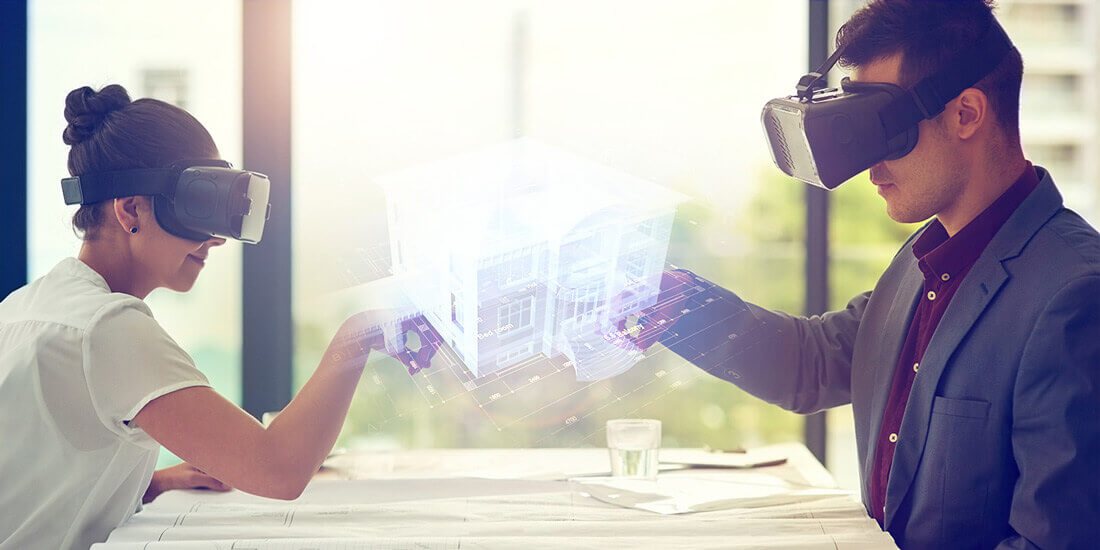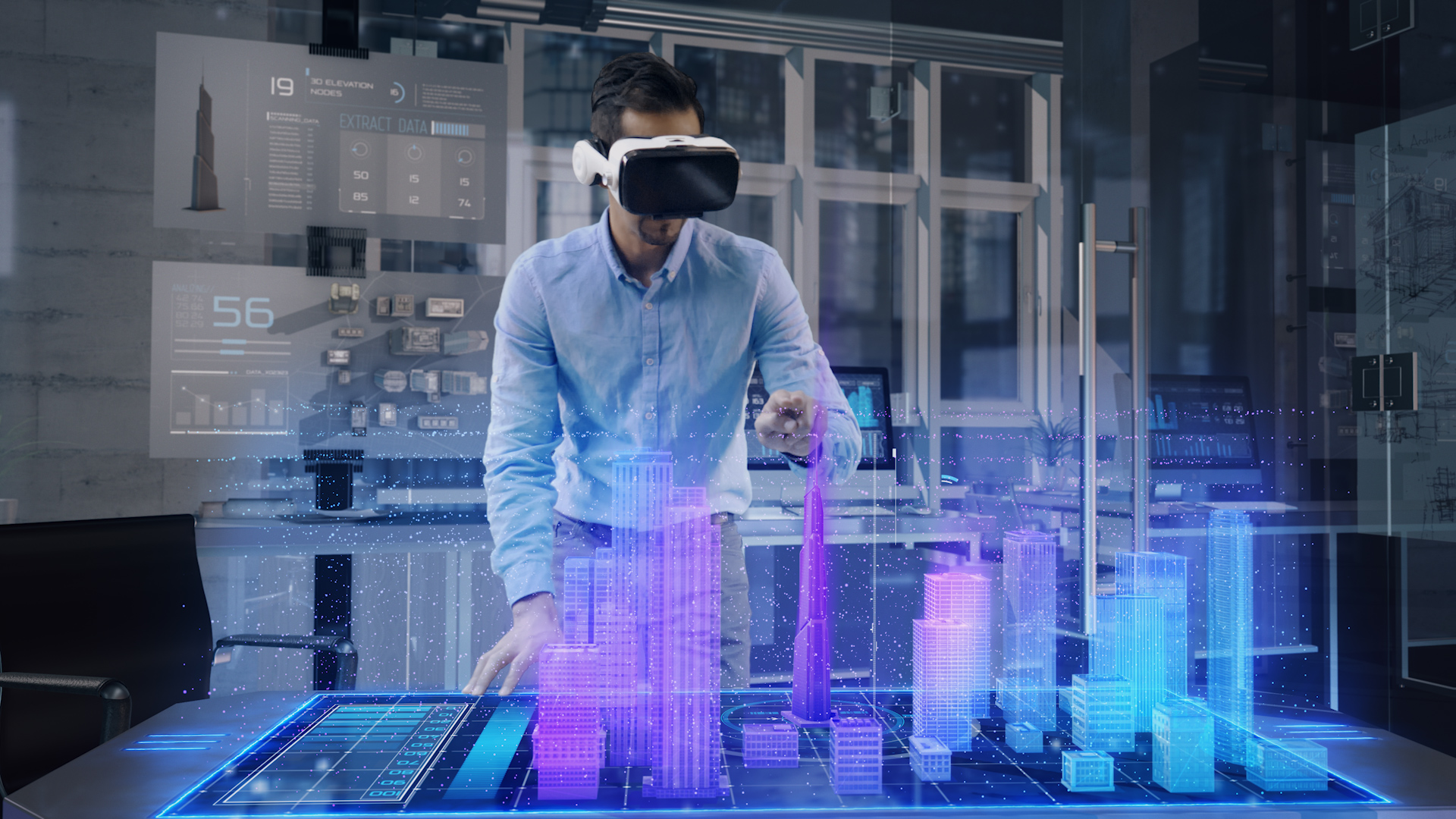In our digital age, countless architectural innovation technologies are emerging and changing the way we design – on the top of these technologies is Virtual Environments as they surely help architects. While some of these creative technologies are fairly new, others are relatively older but have witnessed tremendous development in recent times. These technologies are bound to change the face of architecture as we know it. So, instead of fighting the inevitable, why not embrace it and make the most of it? Here are 10 creative technologies that have a huge impact on architecture.

List of 10 Architectural Innovative Technologies
1. Generative Design
Generative Design mimics how organisms function in nature. It is based on algorithms that produce a number of design variations. You input some parameters and receive in return an outcome that can be adapted into a fully functioning architectural form.
Generative design is capable of producing fluid and lattice-like forms which simulate nature. To get a glimpse of the process, check out this video.
2. Additive Design
Not that different from generative design, additive design is mostly known as 3D printing on an industrial scale. In other words, it combines generative design with advancements in additive manufacturing.
Instead of designing building envelopes made up of separate layers for heating, ventilation, passive solar gain, and other necessities, the additive design presents another approach. It compiles these needs within a single complex “skin” which possesses qualities that mimic biological organisms. However, the process is clearly in need of refinement, which Autodesk is working on.
3. Virtual Reality
VR is not just a game anymore. However, it is almost as simple as gaming. All you need is the headset and a software program.
As you would expect, the headset is obviously used as glasses to look through it. An industry-standard headset, like the Oculus Rift, will ship with all the accessories you need. As for the software program, you can import existing 3-D models from Rhino, Revit, SketchUp into virtual reality–compatible format. After that, you get to look into your new world and walk through your own designs. How awesome is that?
4. Augmented Reality
virtual reality. Virtual reality creates the environment itself using technology. On the other hand, augmented reality uses the existing environment and adds up new layers to it.
This goes side by side with virtual reality. The origin of the word augmented is “augment”, which means to add something, and this is what makes it different from virtual reality. Virtual reality creates the environment itself using technology. On the other hand, augmented reality uses the existing environment and adds up new layers to it.
5. Google Tilt Brush
Tilt Brush is a room-scale 3D painting virtual reality application developed and published by Google. This is one of the most fun-to-use technologies. In fact, it is more of an artistic and playful tool that allows you to experiment with painting from a new perspective. It can be integrated with VR systems, allowing for endless possibilities. It lets your creative juices flow with three-dimensional brush strokes, stars, light, and even fire.
6. Touchable Holograms
Here is another tool that gives us the option to leave the real world and experience virtual reality. Interestingly, it is made of 3D virtual objects which can be manipulated by human hand. Although it sounds like a horror film, researchers are finding multiple uses for it.
In fact, Dr. Yoichi Ochiai of Tsukuba University believes this technology could be used for entertainment, medicine, and architecture. He says that the current state of light technology doesn’t allow humans to interact and feel light as matter. However, the ‘touchable hologram’ has the potential to change that.
So, how does it work? When a person’s hand comes into contact with the 3D image in the second box, the hologram emits ultrasonic radiation pressure. Therefore, the users feel like they are actually touching the object, which gives it a more realistic sense.
7. Architecture Robots
This is not a new technology, as robots have been used for years in construction plants. However, robots have been developed to increase their efficiency. Consequently, the robots become lighter, smarter, and able to multitask. Additionally, they can learn with Artificial Intelligence (AI).
As the robots become lighter and smarter, they can go on the construction site itself and progressively make what humans once did. This would lead to huge changes in the industry. For example, it will set new levels of construction speed for a building. Not to mention, the price of the buildings will drop as human labor would significantly decrease.
8. 3D Printing
Three-dimensional printing technology is one of the most popular and widespread technologies of the decade. It is fairly older than the other technologies. Many universities and architecture firms are already using 3D printers. You may even have one for personal use at home. However, this is one of the most controversial technologies, as some consider it the beginning of the third industrial revolution, while others only point out the constraints of its technique.
3D printing counts as a form of additive manufacturing, as you can build an object from the ground up, layer by layer, through computer-controlled equipment. How does it work? The computer-controlled equipment uses the software to convert your 3D digital model into machine print instructions for the 3D printer.
9. Smart Everything

Courtesy of Videorista
We often hear the terms “Smart building”, “Smart technology” and “Smart Roofs”. Usually, these refer to things that have responsive technology within. For example, technologies that have sensors that detect temperature changes and are backed up with software are considered smart.
There are also Elon musk’s fully integrated solar panels which are simple yet definitely “smart”. The most efficient aspect about them is that they are not like regular bulky solar panels. Instead, they are lightweight and integrated with the house’s roof tiles. Accordingly, this is one of the technologies that will be very easy to install. To know more details about Elon Musk’s technologies and the solar roof tiles, check out these awesome articles.
Read More:
Elon Musk Sets a New Vision for Our Future Cities
Tesla Unveils New Solar Roof Tiles for Homes
Although multinational large companies like IBM have been using the technology for a while now, it is expected to develop at an extraordinary rate over the next few years, taking inter-connectivity between disciplines to a whole new level.





